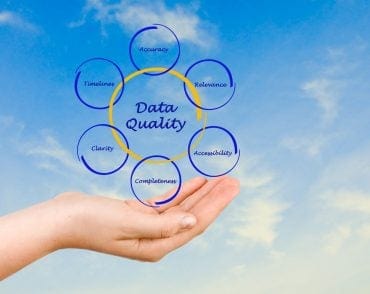
Through scenario analysis and sensitivity testing facilitated by Generative AI and RAG, decision-makers can strategically optimize supply chain strategies and align them with organizational objectives.
Supply chain optimization solutions aim to tackle intricate industry challenges by leveraging advanced methodologies from artificial intelligence (AI) and operations research. The complexity of supply chains, including areas like inventory management and logistics optimization, necessitates utilizing these indispensable solutions. Despite their potential advantages, understanding and improving the inner workings of these solvers can be a formidable task due to the intricate dynamics of supply chains and the substantial volume of data they produce.
Integrating AI and advanced operations research in supply chain optimization solutions is designed to address complex issues comprehensively. These solutions can enhance inventory management, transportation systems, production schedules, and supplier selection by utilizing advanced algorithms. Historical records, current data, and market dynamics are assessed to support data-informed decision-making, resulting in cost savings, improved effectiveness, and enhanced customer approval.
See also: Baltimore Bridge Collapse: The Urgent Need for Real-Time Supply Chain Interoperability
Challenges and Benefits of Data-Driven Decision-Making in Supply Chains
An essential benefit of these solutions is their ability to amass a significant amount of data by continuously monitoring and refining operations. This data covers various aspects, including inventory levels, order processing, transportation activities, demand projections, and supplier performance. The insights obtained from this data are essential in assessing supply chain performance, pinpointing areas for enhancement, and aiding in strategic decision-making.
Nevertheless, managing and analyzing this extensive data repository poses a significant challenge. Conventional methods of data examination may necessitate adjustments when confronted with the complexity and substantial volume of data stemming from supply chains, resulting in inefficiencies and missed optimization prospects. Moreover, deciphering the underlying reasons for decisions made by optimization solvers in supply chains can be perplexing due to the intricate nature of their algorithms and heuristic techniques.
The data generated by solvers during the optimization procedures offers comprehensive insights into the dynamics of decision-making. It encompasses a broad spectrum of information that aids in fully understanding the optimization process. This data includes the values of objective functions linked to each alternative, the criteria utilized for comparison, the status of constraints, and the techniques employed to tackle them, thereby facilitating a thorough analysis of the decision-making process.
Furthermore, this data reveals the strategic balance between exploration and exploitation, guiding future optimization methodologies and contributing to the enhancement of plans. Additionally, it monitors the evolution of solutions over time, ensuring a continual enhancement of optimization strategies.
See also: Generative AI Brings Real-Time Supply Chains Closer to Reality
Harnessing Generative AI for Enhanced Solver Insights and Decision-Making
Within this framework, the field of Generative Artificial Intelligence, particularly innovative technologies such as Retrieval-Augmented Generation (RAG), introduces a groundbreaking approach to leverage the output data produced by solvers efficiently. RAG leverages retrieval-based methodologies to establish its generated content within real-world data from external knowledge bases. By accessing reliable and relevant information from various outlets, including knowledge graphs, databases, and expert opinions, RAG ensures that the insights generated are firmly grounded in accurate and verified data, thereby diminishing the chances of inaccuracies.
Utilizing specialized optimization solvers is pivotal in selecting the most optimal locations for order fulfillment. This strategic task involves a delicate balance between cost-effectiveness and efficiency, aiming to ensure smooth and seamless operations within the organizational framework. Generative AI, such as RAG, facilitates the comprehension of objective functions and strategic trade-offs, thereby empowering decision-makers to strategically optimize their approaches and align them harmoniously with the overarching organizational objectives in a highly effective manner.
The execution of scenario analysis and sensitivity testing, facilitated by Generative AI, emerges as a critical element in fortifying the resilience of decision-making processes. These practices involve exploring multiple scenarios and thoroughly assessing their potential impact on key performance metrics. RAG is a reliable entity that guarantees that the insights generated are deeply rooted in factual and verified data, thus mitigating risks associated with inaccuracies or irrelevant outputs. Through continuous learning and the seamless integration of feedback, RAG consistently refines its models, ultimately leading to a reduction in inaccuracies over an extended period.
The realm of Generative AI and RAG-based approaches underscores the paramount importance of ensuring high-quality data inputs to guarantee the processes’ efficacy. Furthermore, model interpretability emerges as a critical factor, highlighting the necessity for transparency and explainability in the outputs generated. These elements are essential for fostering a comprehensive understanding among decision-makers, subsequently building trust in the recommendations. Ethical considerations also emerge, emphasizing the need to address privacy implications, algorithmic biases, and other moral concerns to uphold responsible AI practices when engaging with Generative AI and RAG.
The presence of biased data inputs poses a significant challenge, as unchecked biases within the training data have the potential to permeate through Generative AI and RAG models, leading to the generation of biased recommendations. To combat this issue, conducting thorough bias assessments on the training data and implementing robust measures to mitigate biases effectively becomes imperative. Moreover, an overreliance on automated insights without human oversight may result in missed opportunities or erroneous decisions. To counter this, it is crucial to establish clear guidelines outlining the role of computerized insights and actively encourage human oversight to validate the recommendations.
Failure to continuously monitor model performance and outputs can have detrimental consequences, potentially resulting in drift or degradation over time. This, in turn, can significantly impact the reliability of insights generated by Generative AI and RAG. To address this challenge, it is imperative to develop resilient monitoring frameworks designed to track model performance meticulously. Additionally, it is crucial to carry out routine assessments to guarantee the precision and significance of the insights offered over a prolonged duration.
The effective mitigation of considerations and pitfalls associated with Generative AI and RAG-based approaches necessitates adopting proactive measures and a continuous commitment to vigilance. Organizations can effectively mitigate biases, foster trust, and uphold responsible AI practices by prioritizing data quality assurance, model interpretability, and ethical considerations. By implementing comprehensive bias assessments, including human oversight, and establishing protocols for continuous monitoring, organizations can harness the transformative power of AI-driven insights to inform decision-making with a high degree of effectiveness. By shunning these strategies, organizations risk being unable to navigate the intricacies of AI-driven solutions effectively, potentially impeding their ability to drive innovation and accomplish strategic goals in supply chain optimization and various other domains.



























